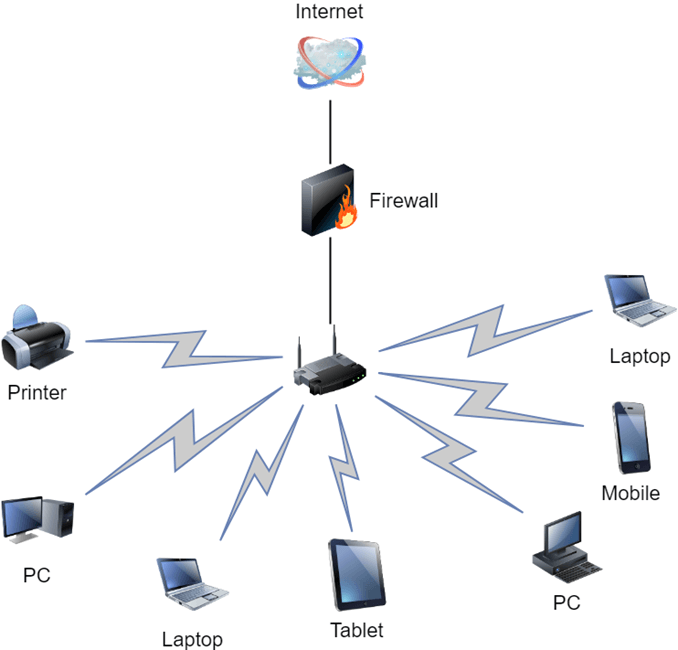Basics of hardware and networking, required for designing
Computer Network Design
Network basics in Computer networks deal with different designs.
- Peer-to-peer networks are where all the computers support the same functions. These are found more in homes and for connecting two or a small number of computers.
- Client-Server is more common in business and consists of a centralized computer that distributes and stores resources for other network users. This centralized computer is called the server and the user’s computer that accesses the server for resources is called a client.
- Servers are important to all users and management of its resources is required for better service to clients (some important clients and other not so important clients). The server software therefore directs the different uses of its resources by granting access rights to some users and preventing others. It prevents users from using resources that are not meant for them. Thus it performs the role of administration and security as well.
- Network Topology is a pattern of links connecting nodes (node can be any device) of a network. The pattern of connection can be a simple one way link or a two way link between two nodes. The interconnection of various nodes can be done in a variety of ways; for example bus, ring, star or mesh.
- Geographic coverage of the network gives us names like Local Area Network (LAN), Metropolitan Area Network (MAN), Wide Area Network ( WAN) or interconnection of all the networks( Internet, which envelops the whole world and is also termed as the world-wide-web www)
Computer Hardware Required to Setup a Network
The Hardware components you obtain need depends on the type of network and the various additions to the network. The most important aspect is the specifications of the various components, since they need to be compatible (be able to connect and work in tandem) with each other. Setting up a computer network should not be confused with connecting to the internet.
List of basic network hardware
- Network interface Card (NIC), is an add-on-card, to enable a desktop computer or laptop to connect to the network. The industry standard used now days is ‘PCI-Peripheral Component Interconnect’ which is the specification(physical size, electrical characteristics, bus timing and protocol) of a computer bus (group of wires) for attaching peripheral devices to a computer motherboard. These are either integrated circuits fitted on the motherboard it self or a set of sockets into which add-on-cards are fitted to provide expansion in services. Old industry standards are ESA, ISA, VESA local bus and the new industry standard is PCI
Express. PCI variants are- PCI 2.2 for 66MHz signaling and 533MB/s of peak transfer rate
- PCI-X for 133MHz signaling and 1066MB/s of peak transfer rate. The protocol for this is slightly changed.
- PCI-X 2.0 gives 266MHz/533MHz rate and 2133MB/s peak transfer rate. A 16 bit bus variant and configuration space of 4096 bytes is a value addition.
- Mini PCI is for use in laptops
- Hub, Switch or router is an entry point to the network. Hub provides multiple ports (for data sending and receiving) to connect computers to your network. A switch is like a hub but differs in operation. It sends received data only to the appropriate place. By directing traffic it improves performance. Router is even more flexible by providing a simple way to share your high speed connection.
- Cable is an important part if you are adding each computer to your network. The various types being twisted cable, co-axial cable and Fiber optic cables.
Continue to: TCP/IP Suite and Member Protocols

ExpressVPN Fast, anonymous browsing all over the world | ||
NordVPN Enjoy online privacy and security with a reliable VPN | ||
Cyber Ghost Browse anonymously with reliable security | ||
SurfShark Affordable and reliable VPN for secure browsing | ||
ZenMate Experience the internet anonymously | ||
Purevpn Keep your data secure with a VPN built for privacy |








